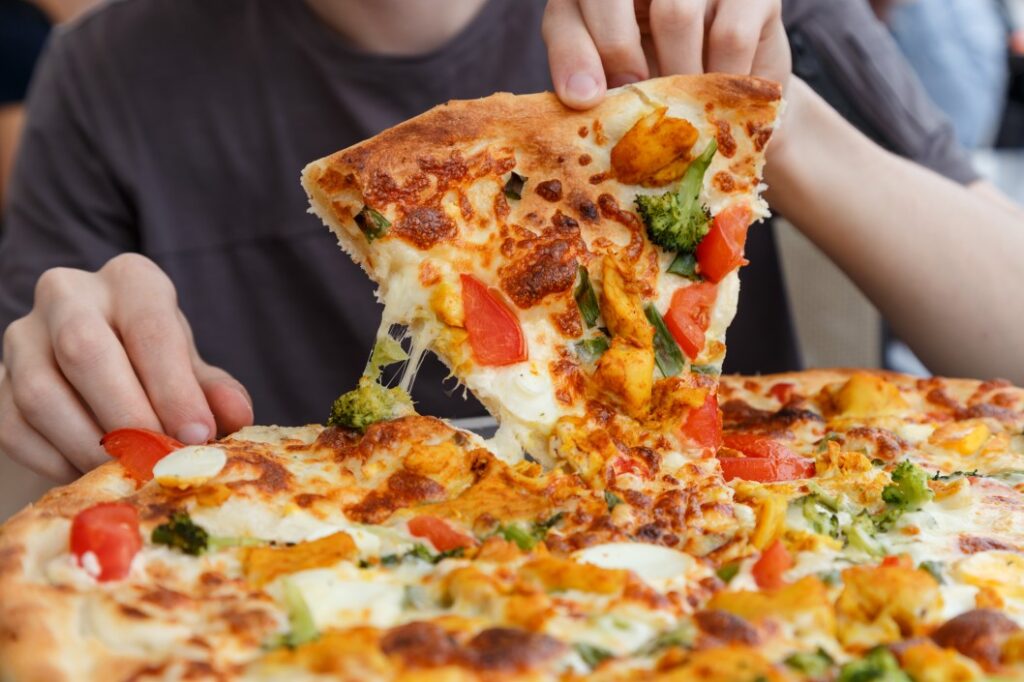What Are Traditional Italian Meals?
So, you’ve taken the trip to Italy and are wondering, What are traditional Italian meals? Here are some facts. Pasta, Ribolitta, Cacio e pepe, and pizza are just a few. Then, get your appetite piqued by learning more about Ribolitta, Cacio e pepe, and Pizza. After reading this article, it will be a pleasure to have taken this trip.
Pasta
Traditional Italian meals are a classic example of a multi-course meal structure, integrating ingredients from different parts of Italy to form a cohesive work of art. Traditionally, rural communities cooked pasta from scratch, while those living in more affluent areas bought it pre-made or bought in a restaurant. Today, the more wealthy Italians prefer to make their own pasta and less from factory-made pasta. Although pasta is still a staple food for the less-affluent sections of the Italian population it is slowly being abandoned.

Pizza
Pizza is a classic Italian dish made from yeasted flatbread with various ingredients baked on it. Although the origins of this dish date back to ancient Greeks it is believed that the original recipe was developed in Italy. Naples was originally a port. The dish became a popular street food in the 18th century. The Italian king and queen visited Naples in 1861 and were wowed by the pizza. The queen enjoyed pizza made with soft white cheese, red tomato sauce, and green basil.
Ribolitta
The medieval world is where Ribolitta soup was first created. In the Middle Ages, the poor would recover large slices of bread from the Lords, infusing them with a meaty aroma and cooking them in a broth with vegetables and herbs. This soup was designed to last for several days. This is why the soup has been called ribollitta. This is a classic Italian dish.
Cacio e pepe
The basic ingredients for Cacio e Pepe are only a few. Pecorino cheese (also known by Parmigiano Reggiano and Pecorino Romano), is a sheep’s-milk cheese. Pre-grated cheese should be avoided, as it contains ingredients to preserve it. Also, pre-grated cheese tends to clump up the sauce.
Vitello tonnato
Vitello tonnato’s origin is unknown, but it most likely came from Northern Italy’s Cuneo region. Lombardy claims its paternity but Veneto and Lombardy don’t actually use tuna. Instead, vitello tonnato is made with leftover veal. Traditional veal is marinated for several hours, sometimes even days. Some chefs use tuna in the sauce, while others serve it in a broth made with veal.
Bagna cauda
Bagna cauda is incredibly simple to prepare, but the rich flavor and history behind this Italian meal is what makes it so special. The original recipe calls for one head of garlic per person, half a “glass” of olive oil, 50 grams of anchovies, and a piece of butter. Nobles in Piedmont began to replace the garlic with truffles from Alba in the nineteenth century.
Sardines in saor
Sardines in saor, one of the most popular Italian dishes, are often prepared by fishermen from their boats. Original recipe includes sardines (flour, onion, vinegar) and other ingredients. These elements lend the dish a distinct fish flavor. To give the dish more heft, raisins and pinenuts were later added. During the Renaissance, sardines were often served with onions fried in oil.
Pesto
The origin of pesto dates back to Roman times when it was first made by pounding the ingredients with a pestle and mortar. Pesto is now made in a food processor. Its flavor is rich and creamy, and it is a traditional Italian meal. It is traditionally made with basil and garlic. Today, however, many people use tomato paste. It is much less flavorful than pesto.
Bistecca fiorentina
Bistecca in Florence, a Florentine favorite dish, is a traditional Italian dish that serves beef steak. Bistecca is derived the English word beefsteak. The dish’s origins date back to the Medici era, when Florence was a major crossroads between France & Italy. English knights visited the city during this time and brought their name to beefsteak. It was later called bistecca, and became the national dish in Florence.